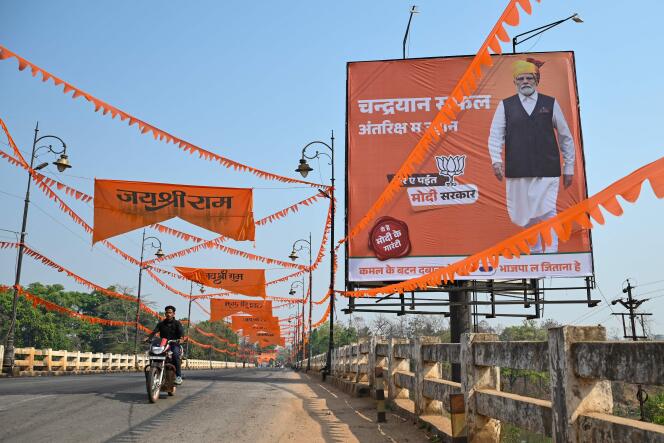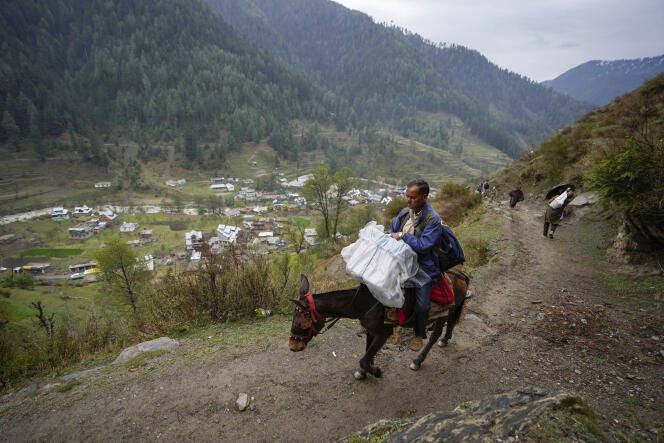


The world's largest democratic process is getting underway in India: 969 million voters, or more than 10% of the world's population, are set to vote between Friday, April 19, and Saturday, June 1, to elect 543 MPs to the Lok Sabha, the lower house of India's Parliament, who will determine the name of the country's next prime minister.
The logistics involved are on par with the scale of the country: Seven phases will be necessary to organize this giant election, transport the voting materials and count the votes. Fifteen million electoral agents have been deployed. At the beginning of the week, porters began moving the electronic machines to the most remote locations.
Over the next 44 days, they will have to cross mountain peaks, deserts and tribal lands, taking boats, riding horses and sometimes elephants. India's electoral regulations stipulate that polling stations must not be more than two kilometers from each dwelling. Voters leave with an ink mark on their index finger, proof of their visit to the polling booth.

Among them, 18 million young people are eligible to vote for the first time. At the other end of the age pyramid, the electorate includes 14 million over-85s and more than 210,000 people over 100 years of age.
Prime Minister Narendra Modi has set himself a very ambitious target: To win over 400 seats, together with his allies, in order to secure the two-thirds majority required to amend the Constitution. In 2019, the opposition won 91 seats, compared with 303 for Modi's Bharatiya Janata Party (Indian People's Party, BJP), and 352 when counted together with its allies.
Unlike in the two previous elections, the Indian National Congress, the main opposition party, has succeeded in convincing some 30 political parties to join forces and unite under the acronym INDIA (Indian National Development Inclusive Alliance). Will this union succeed in halting Modi's run for a third consecutive term? There is room for doubt, given the incumbent prime minister's superiority in logistical, financial, partisan and charismatic terms. After almost a decade in power, Modi's popularity has remained undiminished, supported by media outlets that are largely sympathetic to his cause, polarizing all attention on the prime minister and ignoring or belittling his opponents.
To weaken his rivals' coalition, the government dealt it a terrible blow from the outset, by arresting two of its leaders – Arvind Kejriwal, chief minister of Delhi, and Hemant Soren, the former chief minister of the north-eastern state of Jharkhand – for alleged corruption. The government has hoped to instill suspicion about these elected representatives' probity in voters' minds, at a time when it too is caught up in a scandal around a system of anonymous financing of political parties set up in 2017. It has also had key Congress party bank accounts frozen as part of a case of tax litigation.
You have 59.11% of this article left to read. The rest is for subscribers only.
